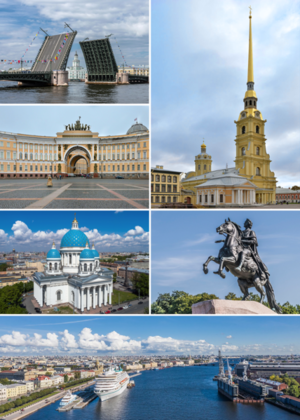Saint Petersburg
Actualizado:
15 jul. 2020

Explora aquí
Saint Petersburg (links=no), formerly known as Petrograd (Петроград) (1914–1924), then Leningrad (Ленинград) (1924–1991), is a city situated on the Neva River, at the head of the Gulf of Finland on the Baltic Sea. It is Russia's second-largest city after Moscow. With over 5.3 million inhabitants as of 2018, it is the fourth-most populous city in Europe, As an important Russian port on the Baltic Sea, it is governed as a federal city. The city was founded by Tsar Peter the Great on 27 May [O.S. 16 May] 1703, on the site of a captured Swedish fortress. It served as a capital of the Russian Tsardom and the subsequent Russian Empire from 1713 to 1918 (being replaced by Moscow for a short period of time between 1728 and 1730). After the October Revolution, the Bolsheviks moved their government to Moscow. In modern times, Saint Petersburg is considered the Northern Capital and serves as a home to some federal government bodies such as the Constitutional Court of Russia and the Heraldic Council of the President of the Russian Federation. It is also a seat for the National Library of Russia and a planned location for the Supreme Court of the Russian Federation. The Historic Centre of Saint Petersburg and Related Groups of Monuments constitute a UNESCO World Heritage Site, so it's also referred to as Russia's cultural capital. Saint Petersburg is home to the Hermitage, one of the largest art museums in the world, and the Lakhta Center, the tallest skyscraper in Europe. Many foreign consulates, international corporations, banks and businesses have offices in Saint Petersburg.